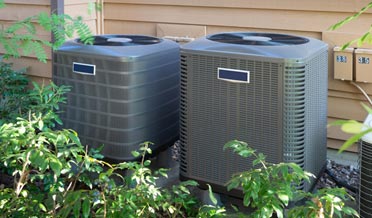6 Tips for New HVAC Installation

6 Tips for New HVAC Installation
Making a new purchase, especially of something big, is pretty exhilarating. While we don’t usually “write home” about purchasing a new heating and cooling system, every setting for buying a new HVAC system is quite exciting.
- If your HVAC purchase is a part of new construction, that is very exciting. If you’re making decisions concerning the important building system, this ought to be fun.
- If you have a chance to budget for and plan the replacement of an old system, it is very rewarding to see a plan come together. Remember, HVAC systems have an expected useful life of about 15 to 20 years.
- If your old system failed (tragically), and you replace it with a new system, you are excited to not be cold (or hot) anymore.
Choices
Each homesite will help homeowners determine purchase decisions. Here’s how it works.
- New construction sites offer the greatest options. Not every style of HVAC system makes financial sense for replacement or remodel projects.
- Homes without ducts can utilize a mini-split ductless system. Homes with ducts can best be served by central heating and air conditioning systems.
- Some sites have natural gas utilities available, and others do not. A natural gas furnace is only optional when a natural gas supply is nearby. (Rural locations might also use a propane supply.)
- Take some time to consider brand and efficiency options. New systems will use improved technology, such as a more efficient refrigerant gas, dual-stage blower motor, and two-stage compressor motor. It’s not rocket science, so take a little time to appreciate the options.
- Observe the efficiency ratings available. For air conditioning function, the efficiency rating is called Seasonal Energy Efficiency Rating (SEER). The higher the number, the greater the efficiency. For the heating function, the efficiency rating is called the Annual Fuel Utilization Efficiency (AFUE) rating. Gas-powered furnaces will have a rating range between 80% and 98.7%. Electric-powered furnaces are considered 100% AFUE rated, capturing all the available energy.
Getting the Size Right
Much depends on choosing the correct size HVAC system. Again, it’s not rocket science, so take a little time to learn about sizing your system.
- The heating function is measured by the capacity to change air temperature, using British Thermal Units (BTUs). One BTU equals the energy expended by striking one match so that a furnace will create thousands of BTUs.
- The cooling function is measured by the capacity to move heat from inside the house to the outside, measured in tonnage.
- So, one HVAC system will have a BTU and tonnage measurement.
- Determining the size of an HVAC system is accomplished by researching the home’s square footage and building envelope materials. Windows and doors tend to allow heat to transfer between indoors and outdoors, while good insulation retards the movement of heat. A load calculation is developed from the research and the required BTUs/tonnage are determined.
- An oversized system will heat or cool too quickly, creating “short cycles.” Too frequent ON/OFF cycles wear the system components too quickly, shortening the system’s lifespan. A short cycle also stops before sufficient humidity is removed during the cooling season.
- An undersized system will struggle to keep up with extremely hot or cold temperatures. The struggle puts significant stress on the system and the long cycles put undo wear on the components, shortening the useful life of the system.
- Getting it right is very important.
Need a New HVAC Installation, Call Us Today!
Contact our New HVAC Installation team at Doctor Cool & Professor Heat today at 281-338-8751 or email Doctor Cool and let our professional Residential Emergency Furnace Repair technicians assist with all of your new HVAC installation questions.
